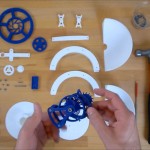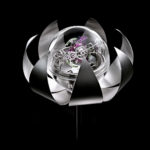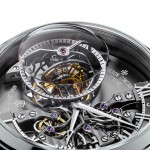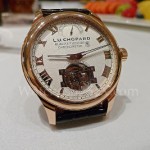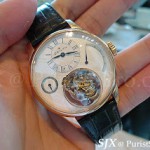In-Depth: MB&F LM Thunderdome Triple-Axis Tourbillon
The ultimate Legacy Machine.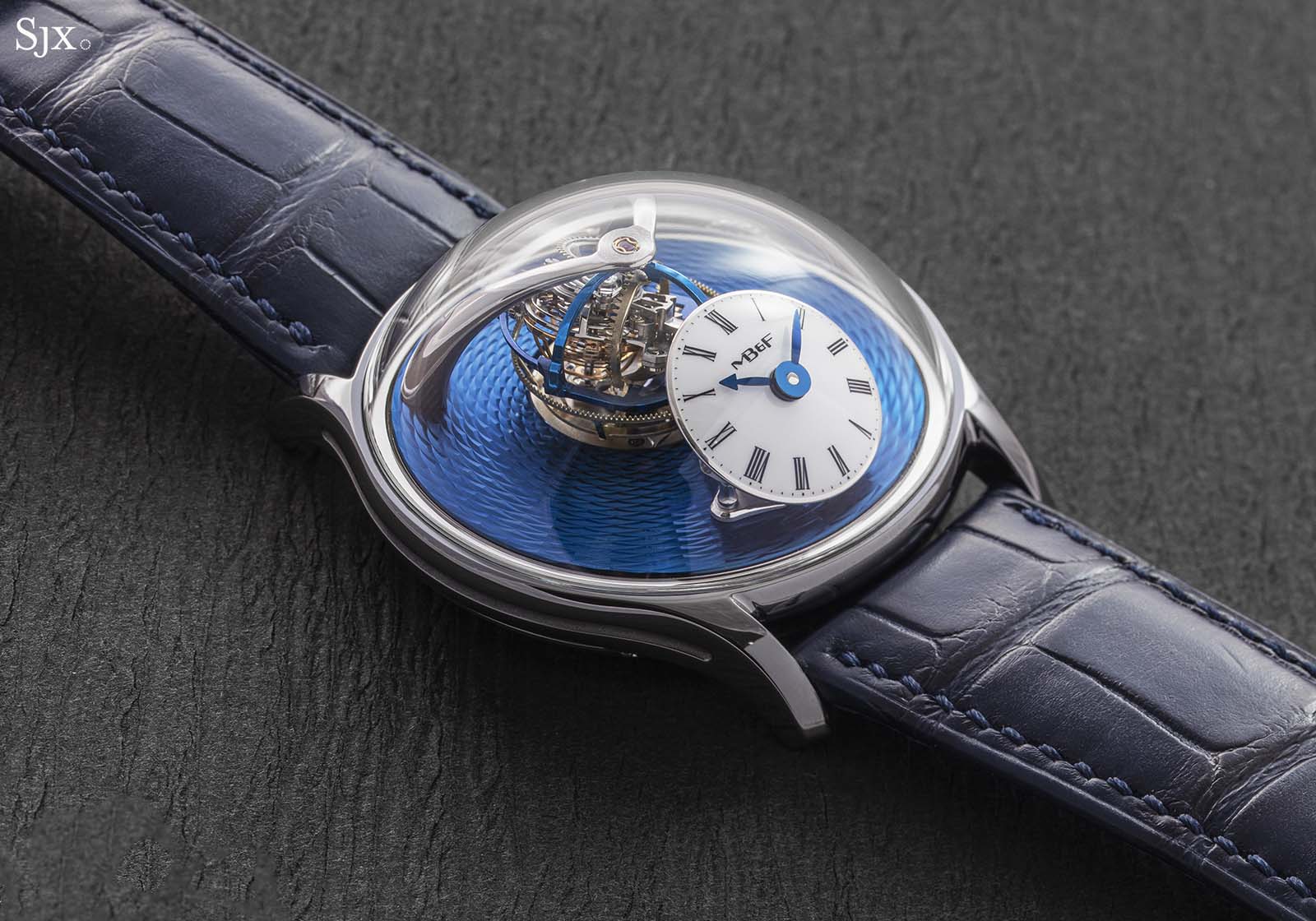
The flying tourbillon wristwatch for women – the Legacy Machine FlyingT – that MB&F launched last year foreshadowed its latest watch – the Legacy Machine Thunderdome, boasting the fastest ever triple-axis tourbillon developed by independent watchmaker Eric Coudray.
No doubt multi-axis tourbillons are hardly new, especially after Jaeger-LeCoultre unveiled its first Gyrotourbillon in 2005 – which was also developed by Mr Coudray – but the LM Thunderdome takes the concept further by every metric, primarily by building on past ideas to achieve higher cage velocities than ever before.
Most intriguingly, the Thunderdome movement incorporates a tourbillon lever escapement first devised by Albert H. Potter – a talented American watchmaker who worked in Geneva in the late 19th century – as well as an unusual multi-axis tourbillon that utilises a carrousel for its outermost cage, christened the TriAx.
The ingenious construction of the tourbillon is thanks to Mr Coudray, who now runs complications workshop TEC Ebauches and is best known for the numerous exotic tourbillon movements he has developed. After his two-decades at Jaeger-LeCoultre where he became the resident technical genius, Mr Coudray worked for several brands of varying levels of credibility, including at Cabestan where he perfected its vertical tourbillon, and more recently at Cecil Purnell, where he created the Spherion tri-axial tourbillon, which has a similar construction to the Thunderdome.
Besides Mr Coudray, another, more prominent independent watchmaker was also recruited to develop the design and finish of the movement, as well as the guilloche dial – Kari Voutilainen.
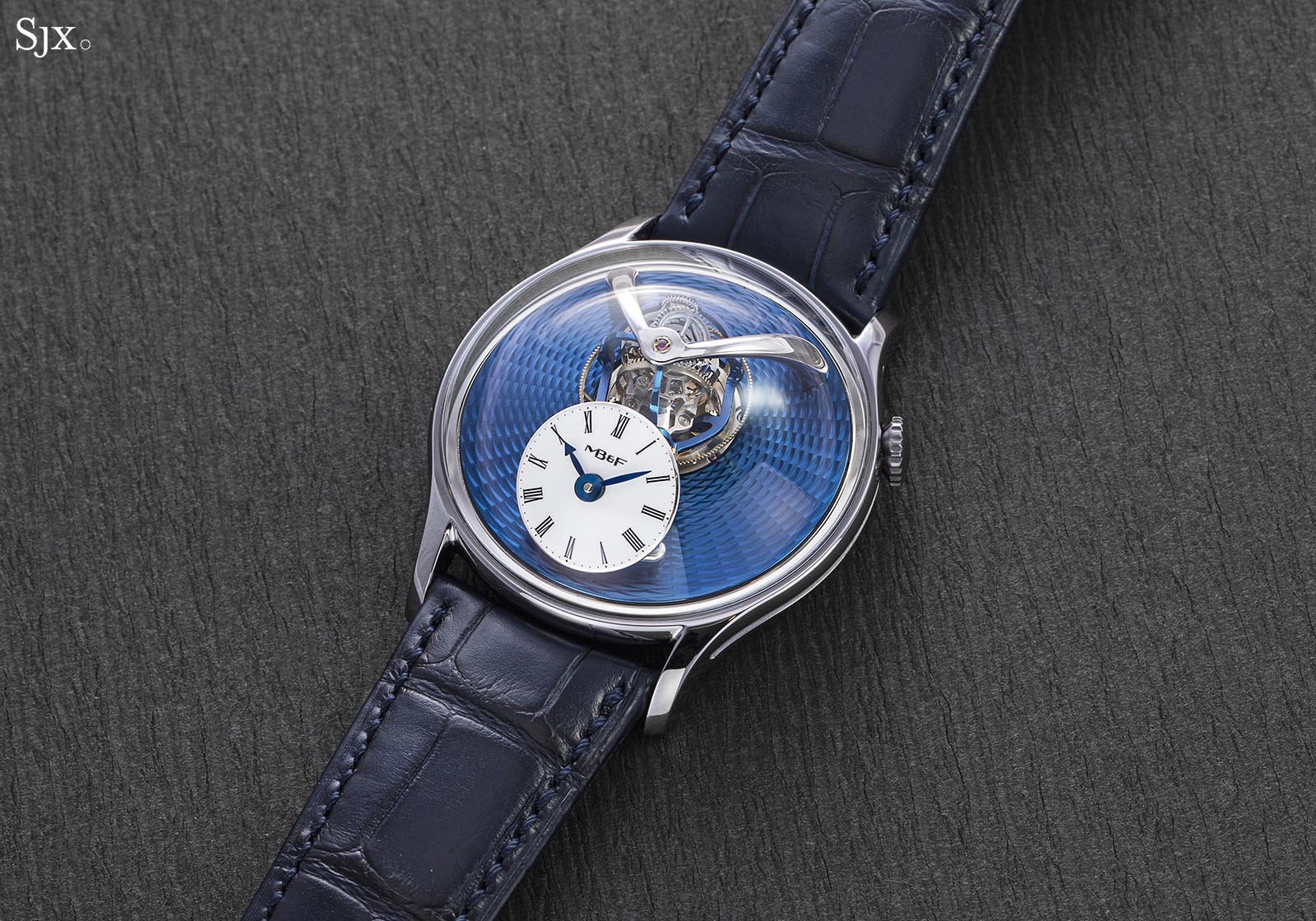
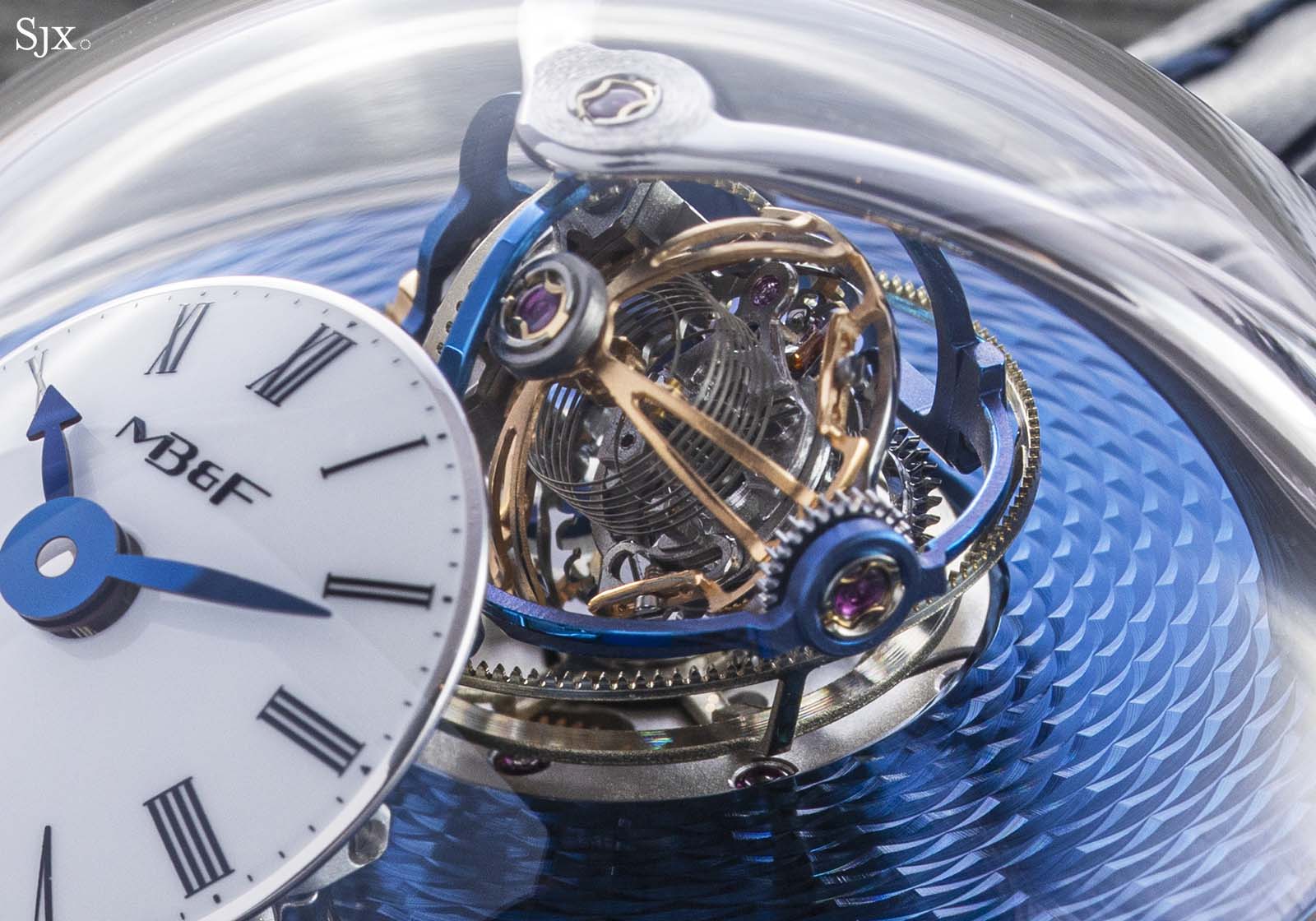
Tantalum or platinum
It’s worth noting the LM Thunderdome is being produced in two editions: one in platinum that’s a limited edition of 33 pieces with a blue guilloche dial, and the other that’s featured in this article, which has a tantalum case.
The tantalum version is a limited edition of 10 watches to mark the 40th anniversary of Singapore retailer The Hour Glass, five with the same blue guilloché dial and another five with aventurine glass dials.
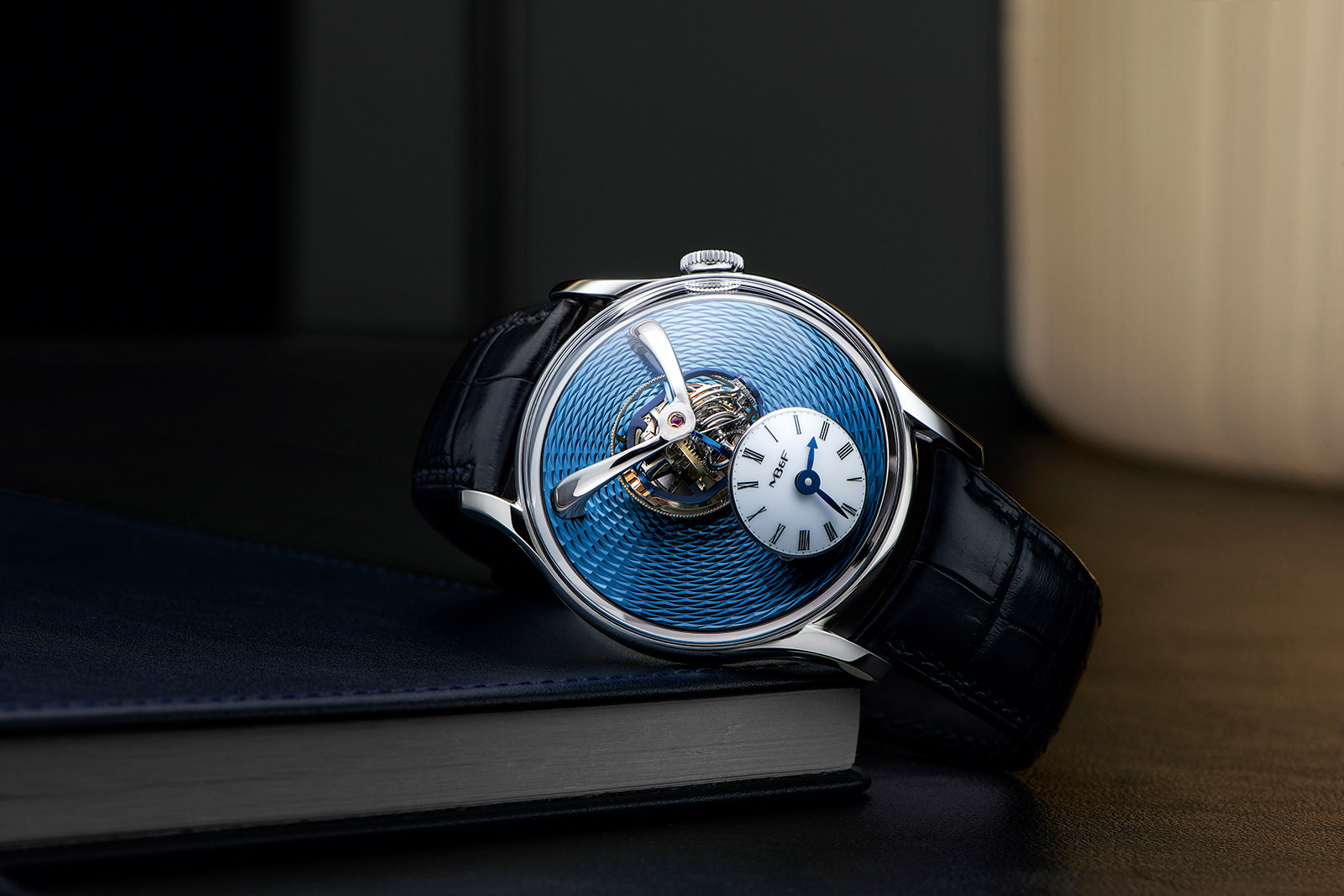
The LM Thunderome in platinum. Image – MB&F
Marvellously domed
While last year’s FlyingT for ladies has a similar case profile, it was just 38.5mm wide, while the Thunderdome is a substantial 44mm – and in tantalum.
A dense, inert metal, tantalum is greyish with a hint of blue and possesses a high melting point, which is why it is sometimes used to tip armour-piercing shells. It combines the heft of platinum with a greater durability and scratch-resistance than steel. Though less costly than platinum in its natural form, tantalum is tougher to machine, which is why tantalum watch cases cost as much as those in platinum, or even more.
In typical Legacy Machine style, the case is fitted with a dramatically domed sapphire crystal that emphasises the three-dimensionality of the carriage. But it is far higher than the crystal on any earlier Legacy Machine, at its highest point, it measures 22.5mm, which makes it half as high as it is wide.
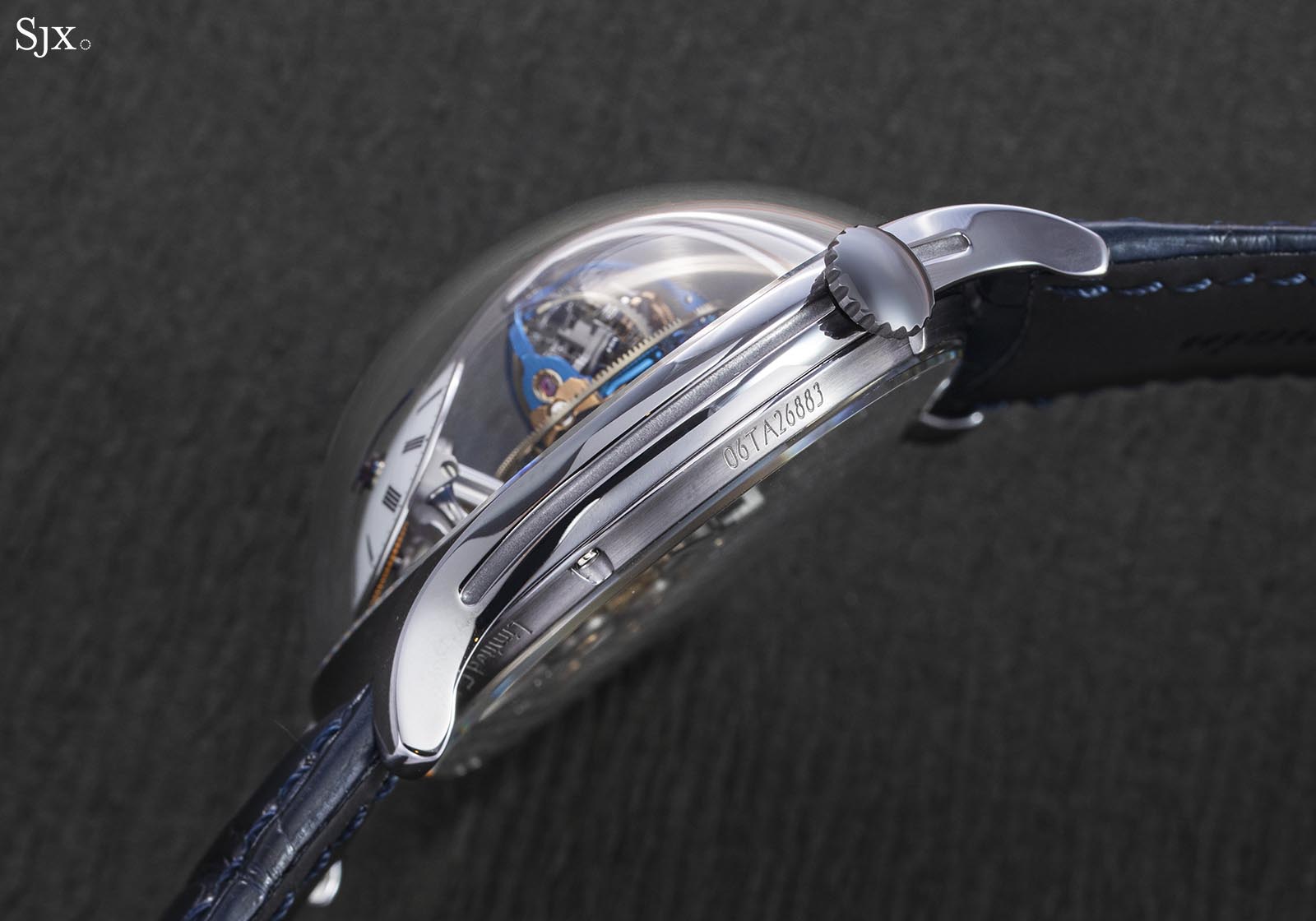
The LM Thunderdome
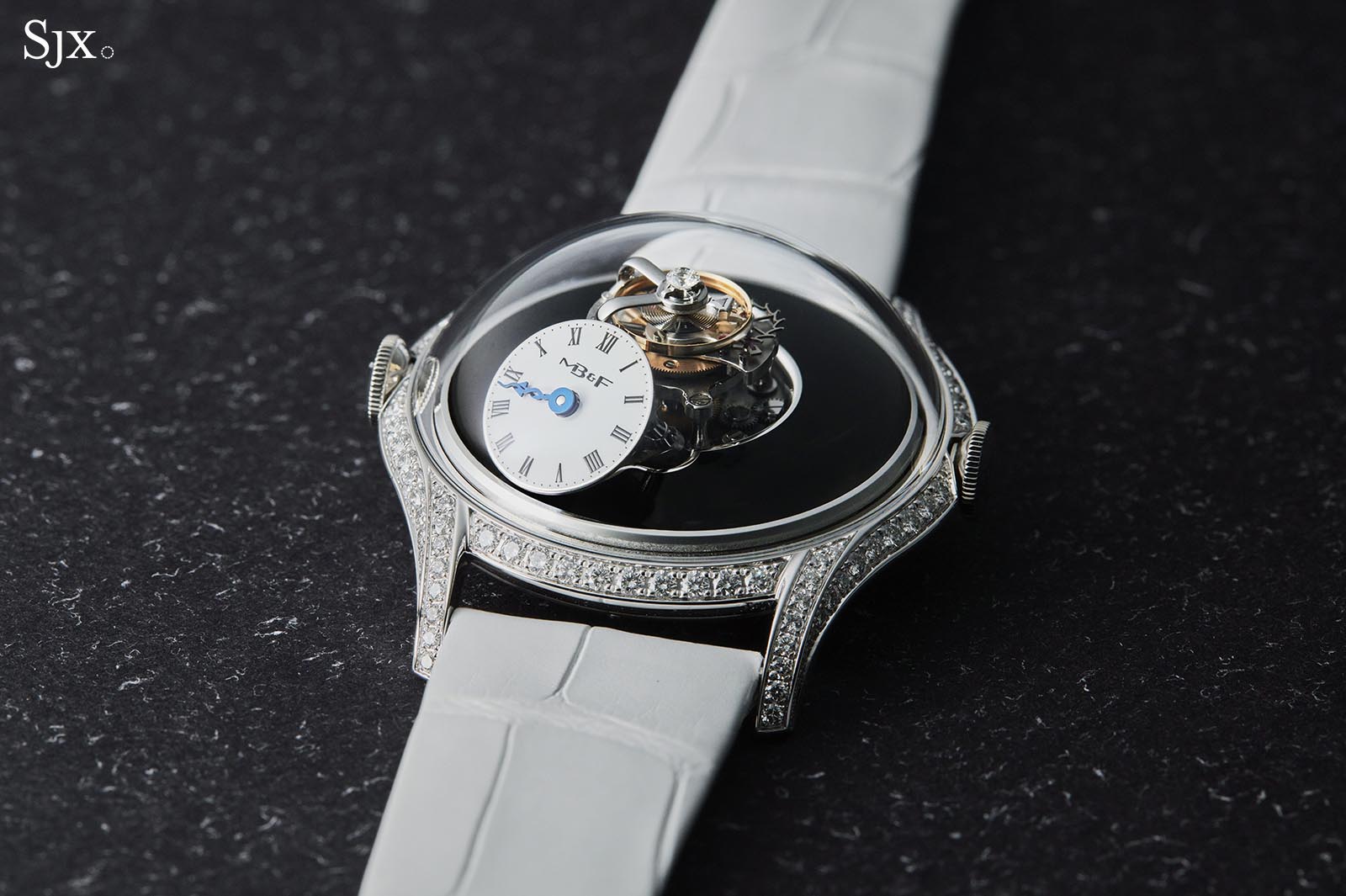
Last year’s LM FlyingT
But despite its bulbous profile, the Thunderdome wears comfortably and elegantly on the wrist due to its flat case band and slim, gently curved lugs. It is in essence a wide but thin watch, capped with a huge crystal.
Under the domed crystal is an engine-turned blue dial produced by Comblémine, the dial factory owned by Mr Voutilainen and a favourite supplier of independent watch brands. Found on both the platinum and tantalum versions of the watch, the dial is decorated with engraved, radial waves, which further draw attention to the central tourbillon.
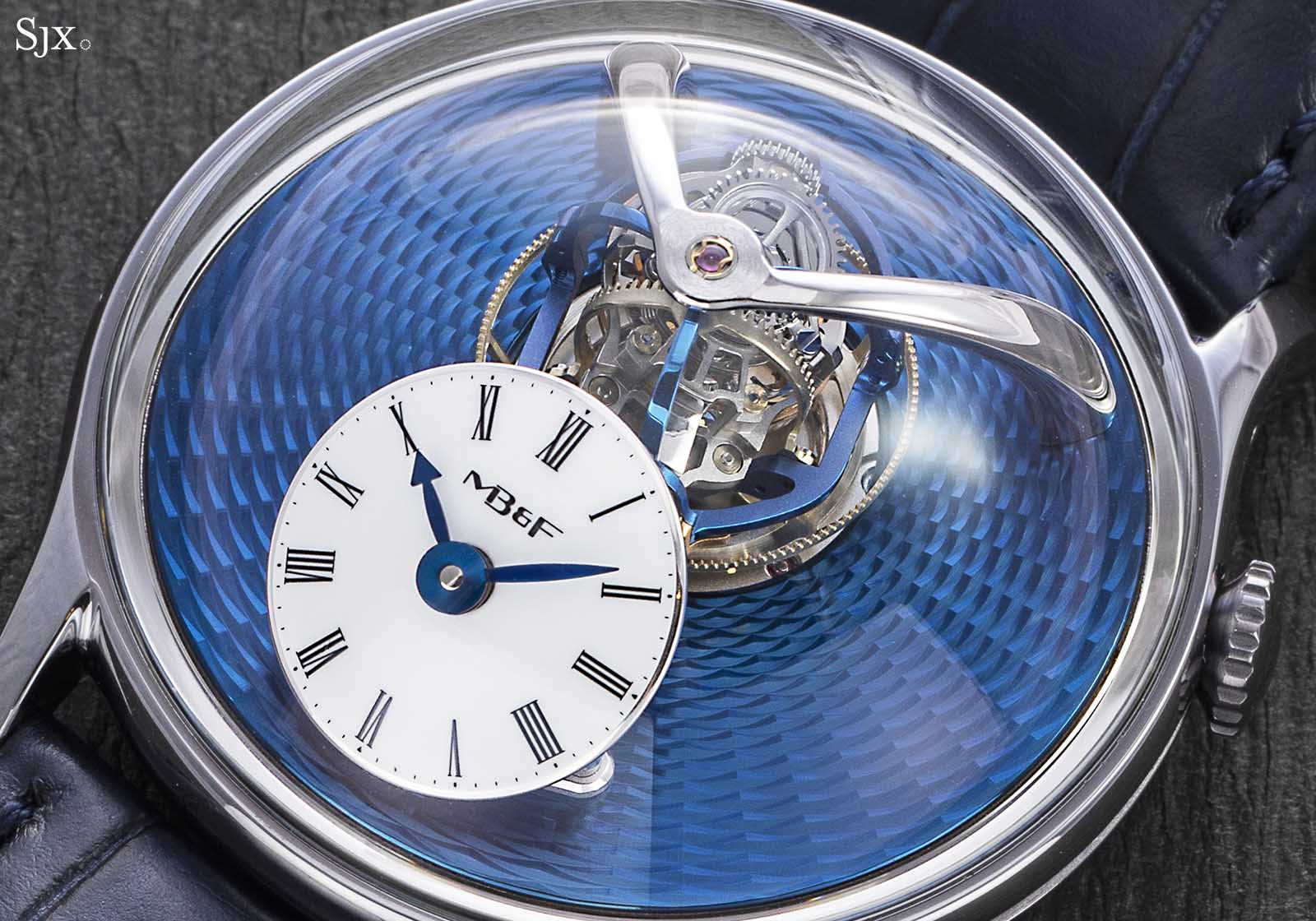
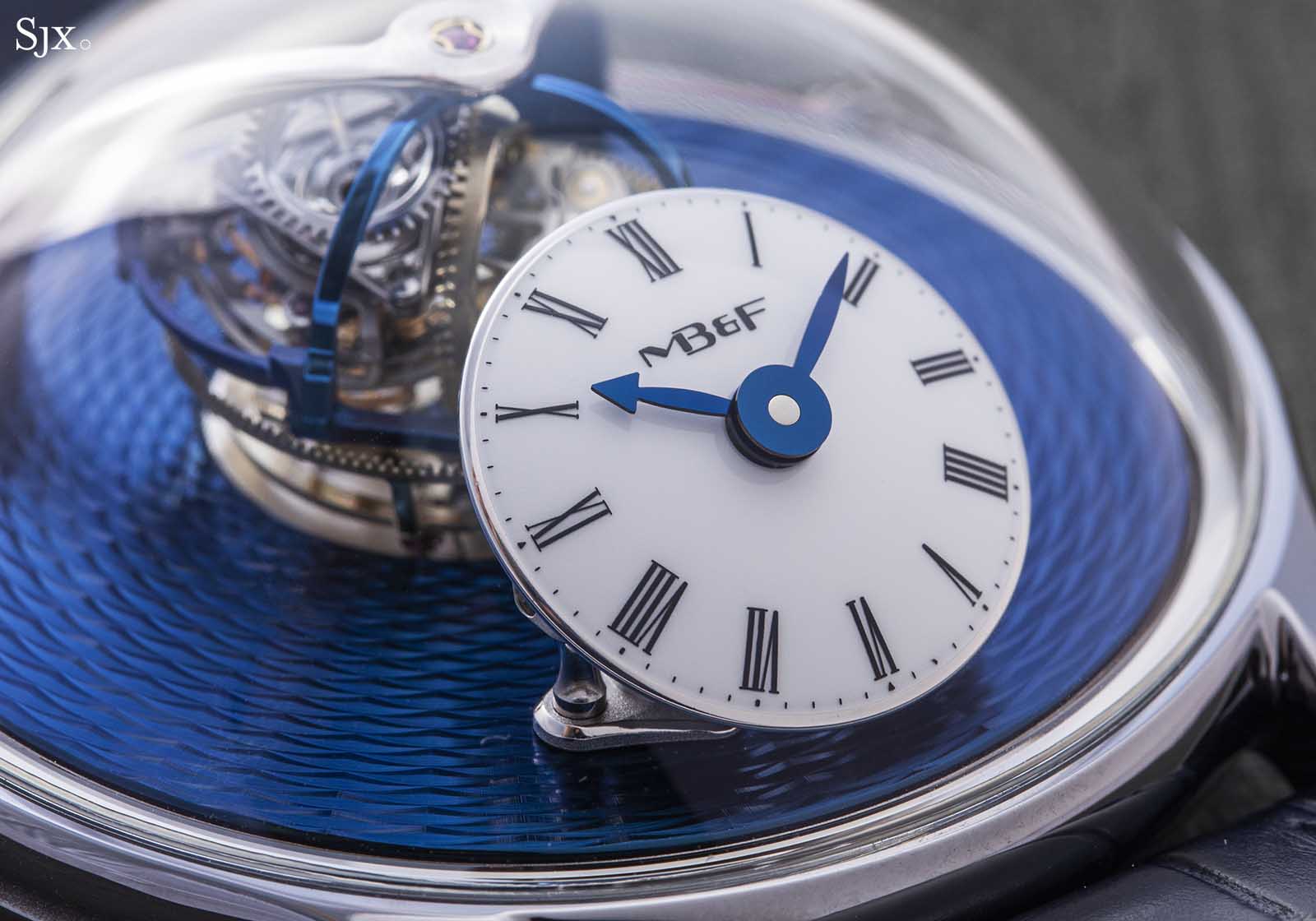
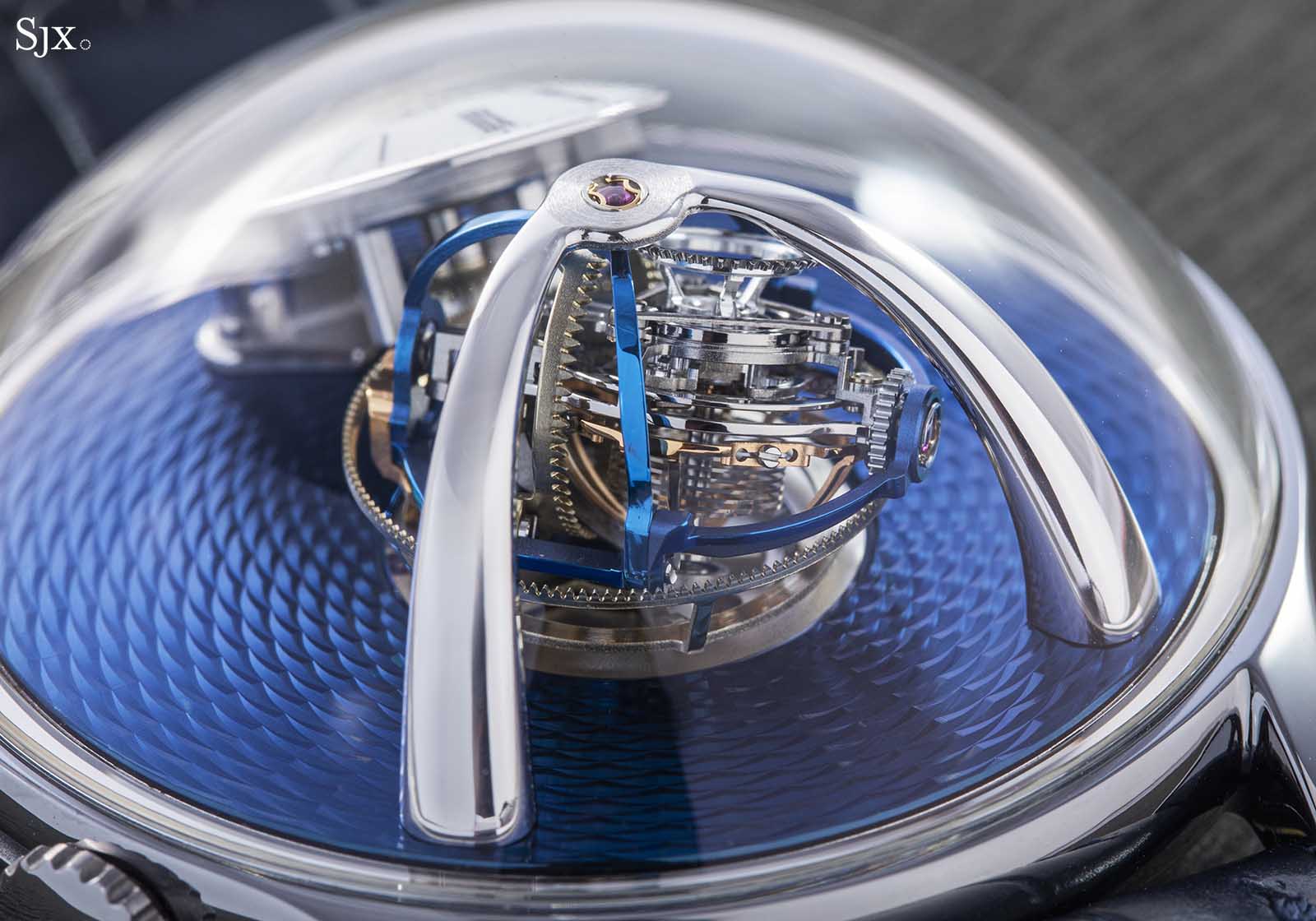
Though the guilloche is more typical of the Legacy Machines, and will probably be more popular, the other dial is striking in a different way, being made of aventurine glass. The sparkly material evokes deep space, and is at home with MB&F’s sci-fi styling.
Time telling is done via a white lacquer dial that’s inclined for better legibility but as a result obscures part of the tourbillon – which is a shame. And towering above, as with earlier Legacy Machines, is the V-shaped bridge with polished, rounded arms that holds the tourbillon in place.
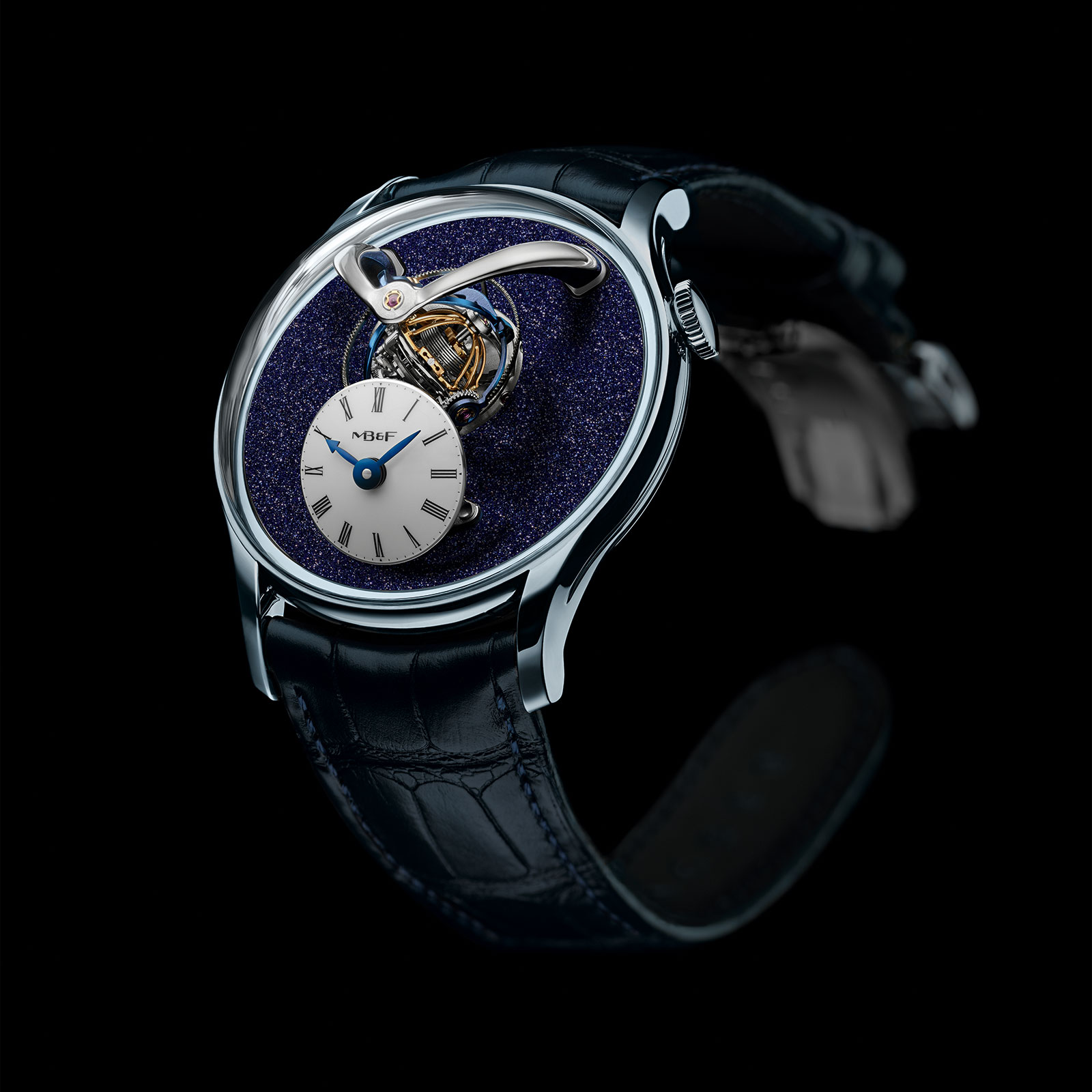
The LM Thunderdome with an aventurine dial. Image – MB&F
The tri-axial tourbillon in detail
To appreciate the tri-axial tourbillon in the Thunderdome and understand how it differs from a regular triple-axis tourbillon, it is worth diving into the fundamentals of a basic tourbillon.
To begin with, we first revisit the ubiquitous Swiss lever escapement, found in practically every modern mechanical watch today.
The balance wheel, which oscillates at a precise rate, controls the release of the escape wheel via the pallet fork. The escape wheel in turn, is connected to the rest of the geartrain that drives the hands of the watch.
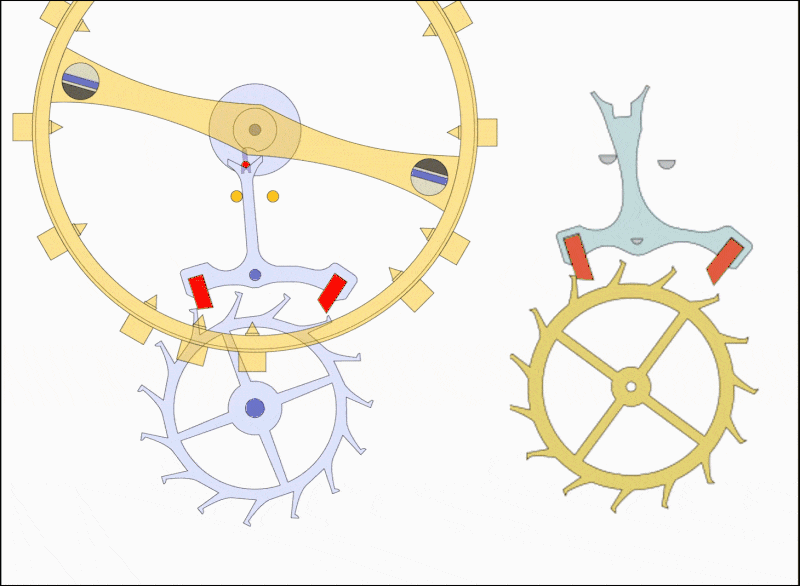
Animation of the lever escapement. Image – Wikipedia
Collectively, all these components comprise the escapement. However, the oscillating balance wheel and hairspring are susceptible to gravity effects. This is heavily dependant on the orientation of the watch, especially in the vertical positions common in pocket watches, and is known as positional error.
Thus, the tourbillon was invented as a solution by averaging out these errors. This is achieved by rotating the entire escapement assembly a full 360°, usually in 60 seconds, within a tourbillon cage.
However, the typical tourbillon only revolves around one plane or orientation. In modern times, as a demonstration of technical prowess, watchmakers have also come up with multiple axis tourbillons by nesting tourbillon cages within each other – much like a gyroscope.
In the case of the LM Thunderdome, there are three cages as it is a triple-axis tourbillon. In the diagram below, the first and innermost tourbillon cage is in green, with the balance wheel in yellow mounted on it.
Intriguingly, the balance wheel is a large, skeletonised hemisphere, which further enhances the animated motion of the tourbillon as it oscillates back and forth. It also conveniently allows space to house a cylindrical hairspring within – usually impractical on traditional wristwatches due to thickness, but offers better isochronism, as traditionally found on marine chronometers.
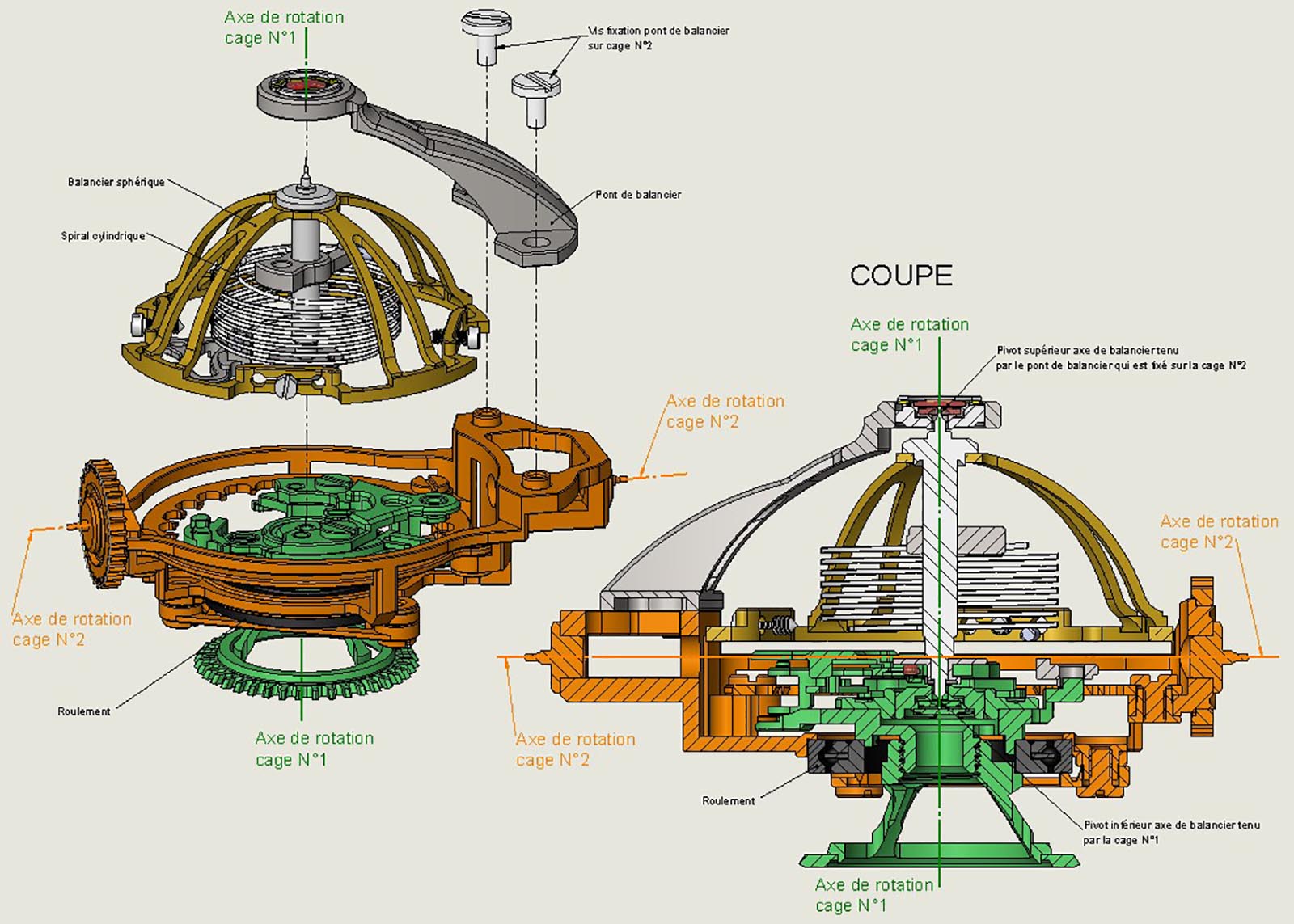
The first two cages of the LM Thunderdome, coloured green and orange respectively. Image – MB&F
The first cage is then housed within a second cage, in orange above, that pivots at a 90° angle relative to the first cage. The gearing is set up such that when the second cage rotates, it also simultaneously drives the first cage, via gear teeth as seen on the bottom rim of the cage.
By extension of that logic, the first two cages can then be housed in a third cage, as seen below in blue. Realistically, this is the practical limit of a multi-axis tourbillon, as this provides three orthogonal rotation directions that encompasses the three spatial orientations in 3D space.
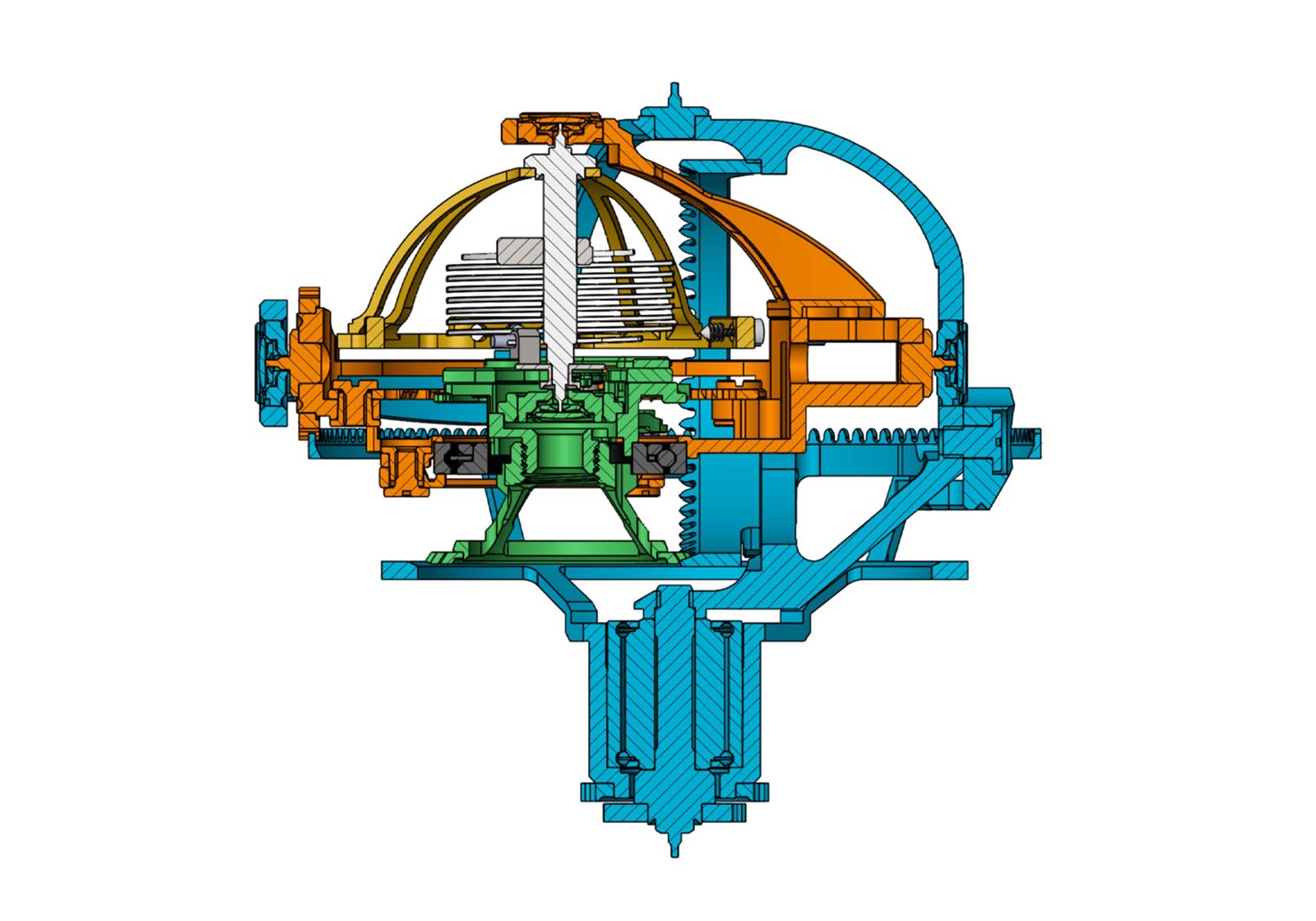
The first two tourbillon cages of the LM Thunderdome, encased by the third cage in blue. Image – MB&F
However, unlike a conventional triple-axis tourbillon, the LM Thunderbolt incorporates a few distinguishing features. Most notably, the third cage is not a tourbillon but rather, a carrousel.
Unlike a tourbillon where only one pinion directly drives the cage, the carrousel has two driven pinions – one to drive the cage, and the other to power the escapement contained within. In the image below, the third cage in blue swivels around a pedestal, in bronze.
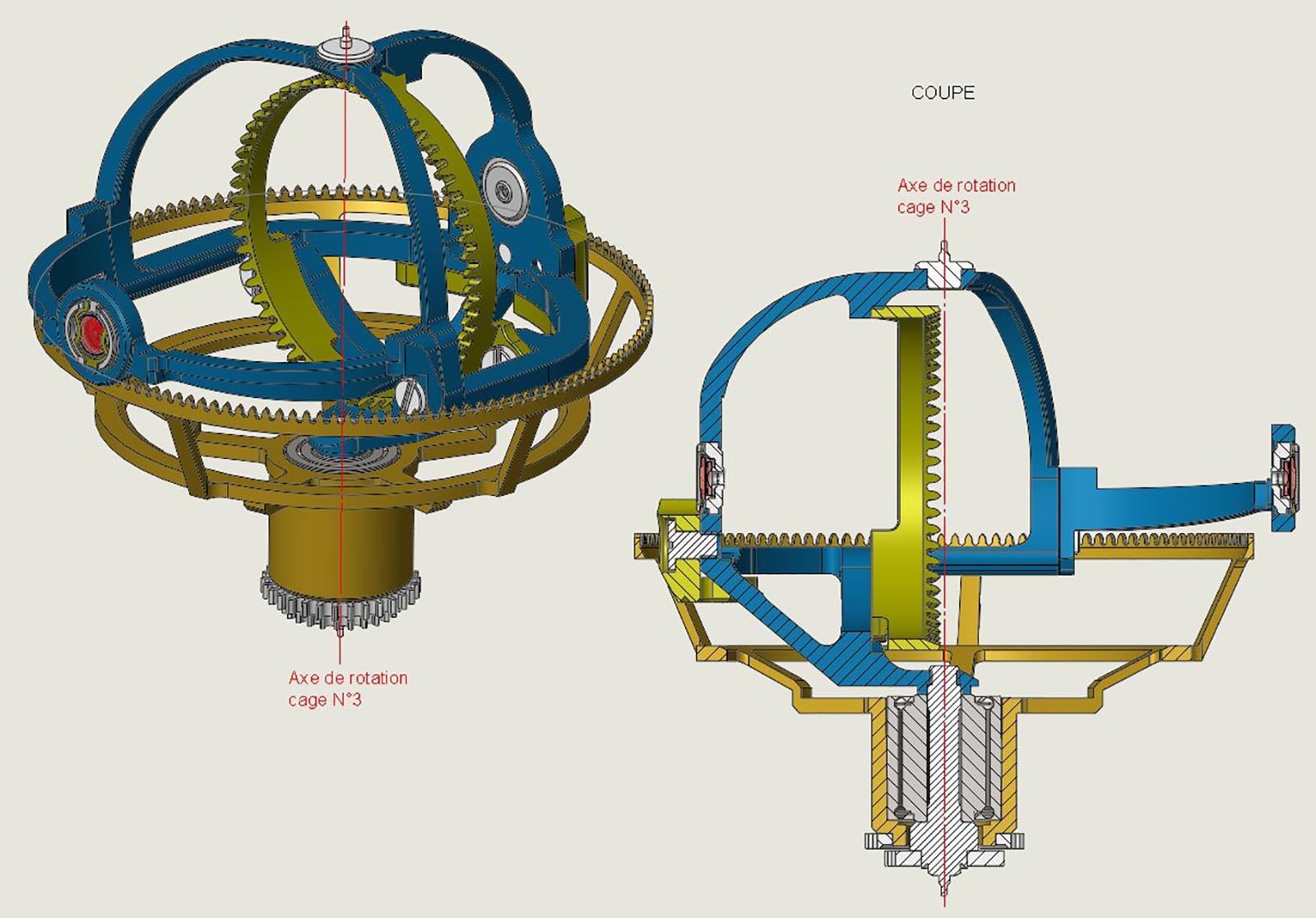
The carrousel mechanism of the third cage of the LM Thunderdome. Image – MB&F
If this was a traditional tourbillon design, the pedestal will be stationary, while a shaft running through its centre drives the tourbillon cage. However, as a carrousel, the pedestal also rotates together with the blue cage, albeit at a slightly slower speed. This relative difference in speed is what drives and powers the inner two tourbillon cages.
It appears superfluous at first, to combine a carrousel with a multi-axis tourbillon, but upon further meditation it makes sense. The carrousel allows the movement designers to control the speed which the inner two cages are driven, by varying this relative speed.
Without a carrousel, the third cage will have to rotate at a much slower speed that is visually less engaging, because the relative speed between the cage and the pedestal diverges too much, thus driving the inner cages unreasonably fast.
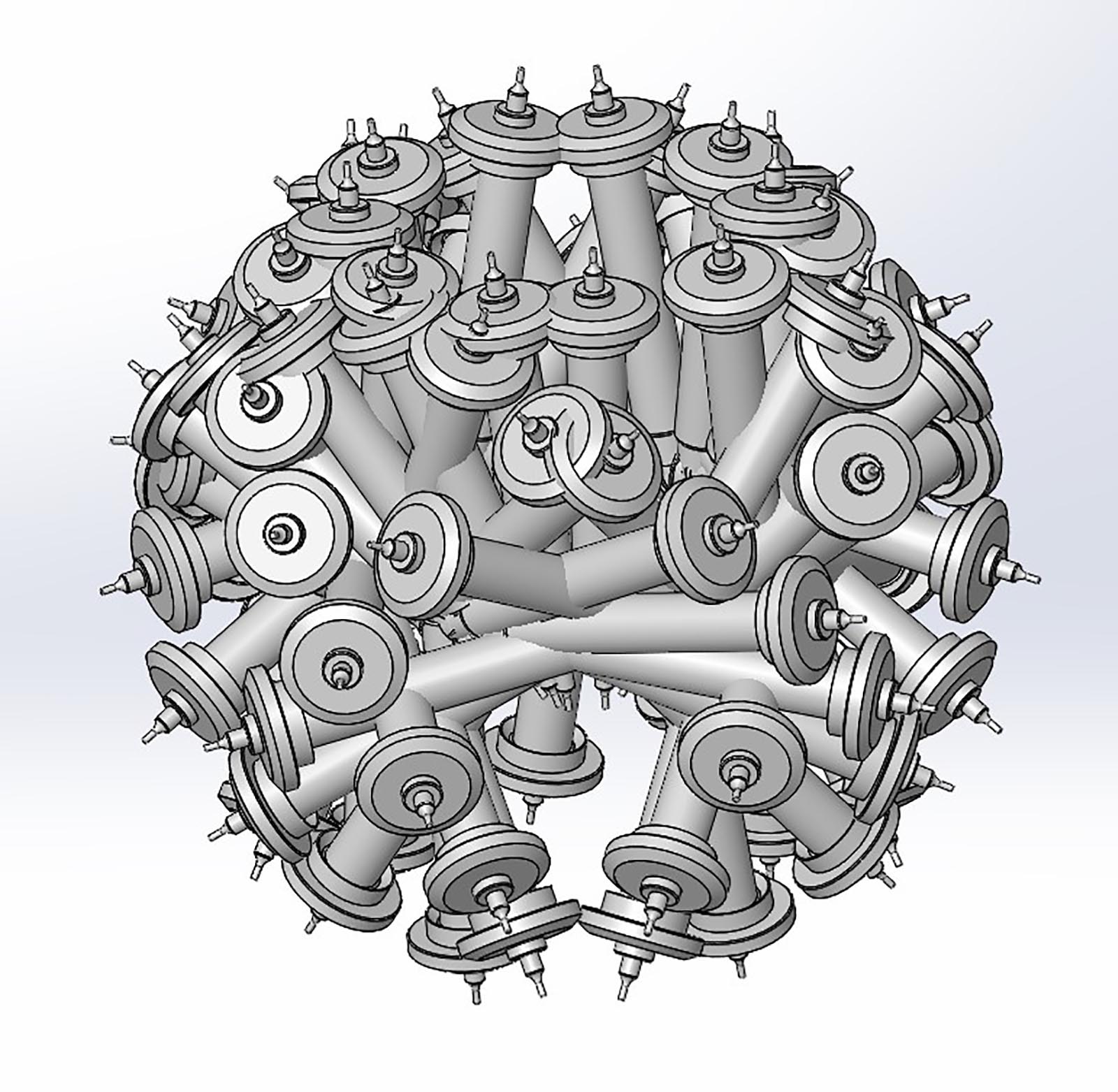
The cumulative position of the balance staff in 3D space. Image – MB&F
The combined axis of the three cages thus results in the escapement of the movement to rotate in a seemingly random orbit, which ideally exposes the balance wheel to almost all orientation in 3D space and averages its timing errors. But timekeeping is of less importance than the visual spectacle of the multi-axis tourbillon doing its thing, right in the centre of the dial.
The spectacle is enhanced by the speeds of the tourbillon cages, made to rotate rapidly by design. With the three cages completing a revolution of 8s, 12s and 20s respectively, this makes it the fastest rotating multi-axis tourbillon. Collectively, the three cages will reset to their original positions after 120 seconds – the least common multiple of the period of each cage.
Finally, there is a curious feature within the construction of the innermost tourbillon cage: it is not constructed like a traditional tourbillon with a cage that encapsulates the balance wheel, instead it is more of a platform that carries the tourbillon, an idea first found in the Montblanc Exotourbillon.
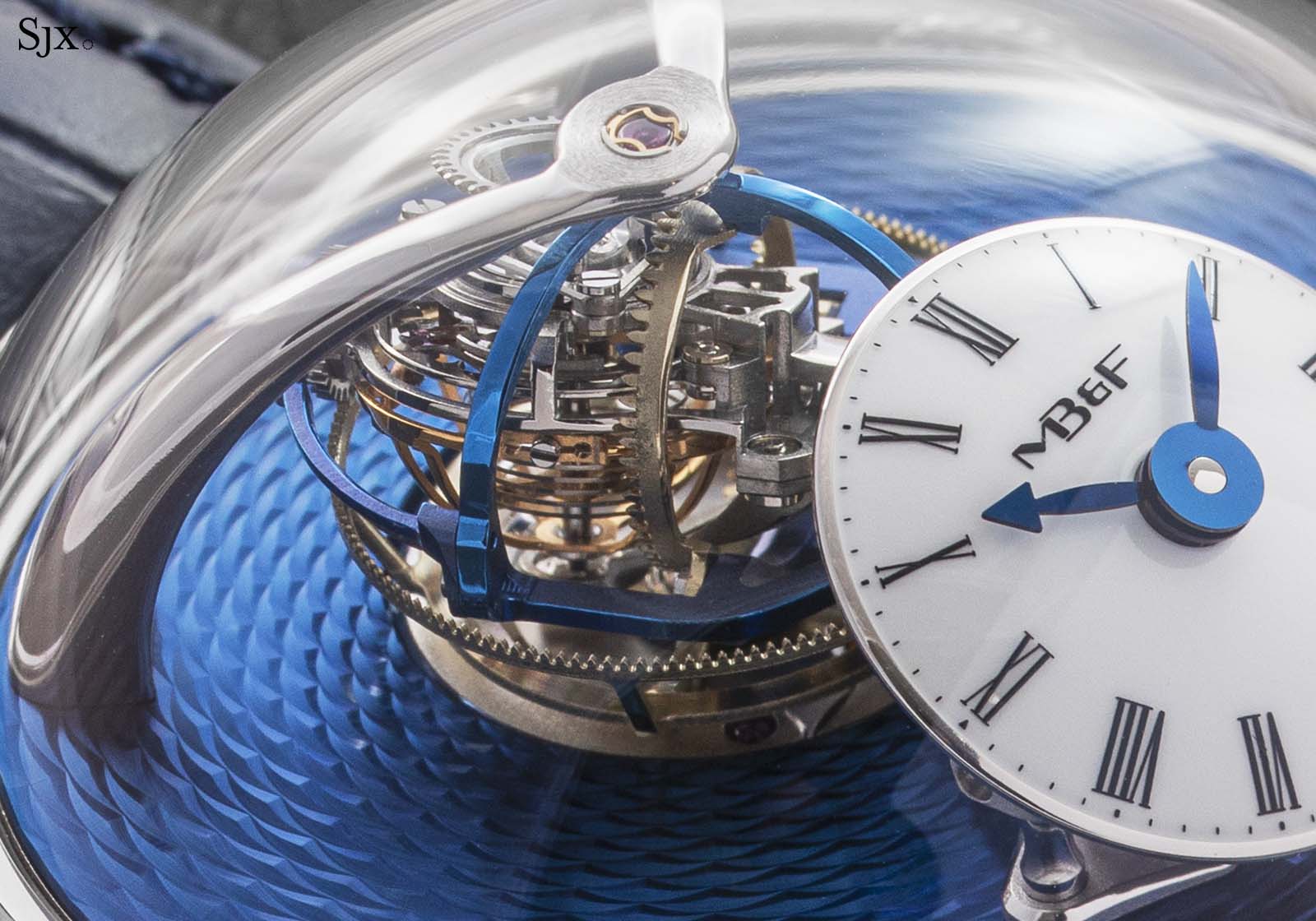
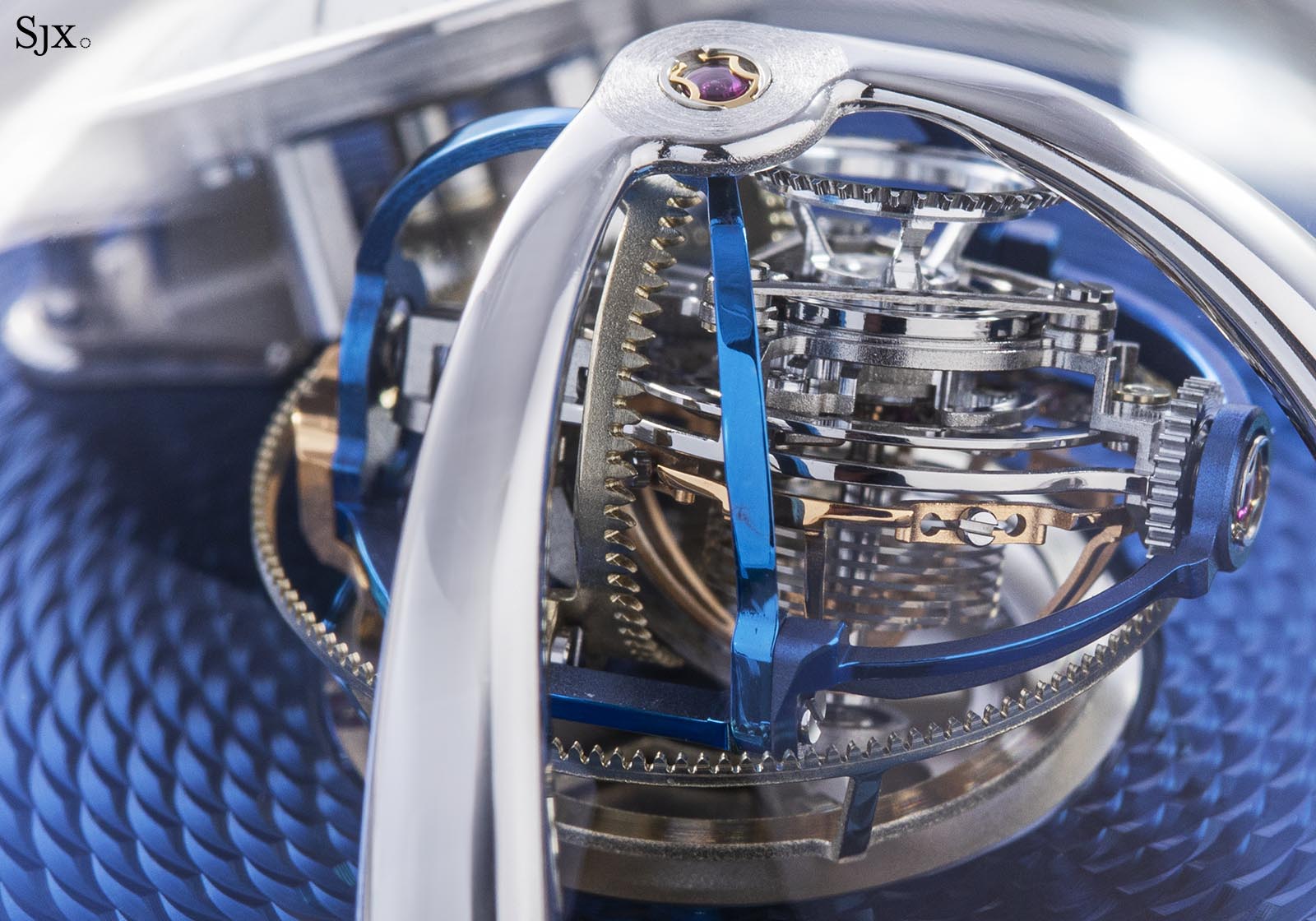
An inventive escapement
Besides the carrousel of the outermost cage, there is a little trick employed to allow the innermost cage to rotate quickly – a novel escapement.
In a typical tourbillon, the escape wheel has a tiny pinion that allows it to revolve around a fixed gear on the movement. This acts as a reduction gear that reduces the speed of the tourbillon, usually to the typical 60 seconds a revolution.
The LM Thunderdome however, requires the cages to rotate quickly. Thus, an idea of using a different escapement design was revisited – a fixed escape wheel, originally conceived by Albert H. Potter (1836-1908), a New York native who moved to Geneva in 1875. Though not widely known today, New York-born Potter was one of the most prominent American watchmakers of his generation, highly regarded for his gorgeous, organically styled pocket watch movements.
His original idea was to forgo the escape wheel with pinion entirely, and redesign it as a stationary part instead, which the pallet fork of the tourbillon cage engages with directly. This effectively bypasses the reduction gearing, and allows for a faster rotation speed of the tourbillon cage in a mechanically compact way.
In the case of the LM Thunderdome, the fixed escape wheel, below in grey, has inward-facing teeth. This allows the pallet fork of the innermost tourbillon cage, in green, to interact with the escape wheel directly, without any reduction gearing and therefore achieving a speed of one revolution in eight seconds.
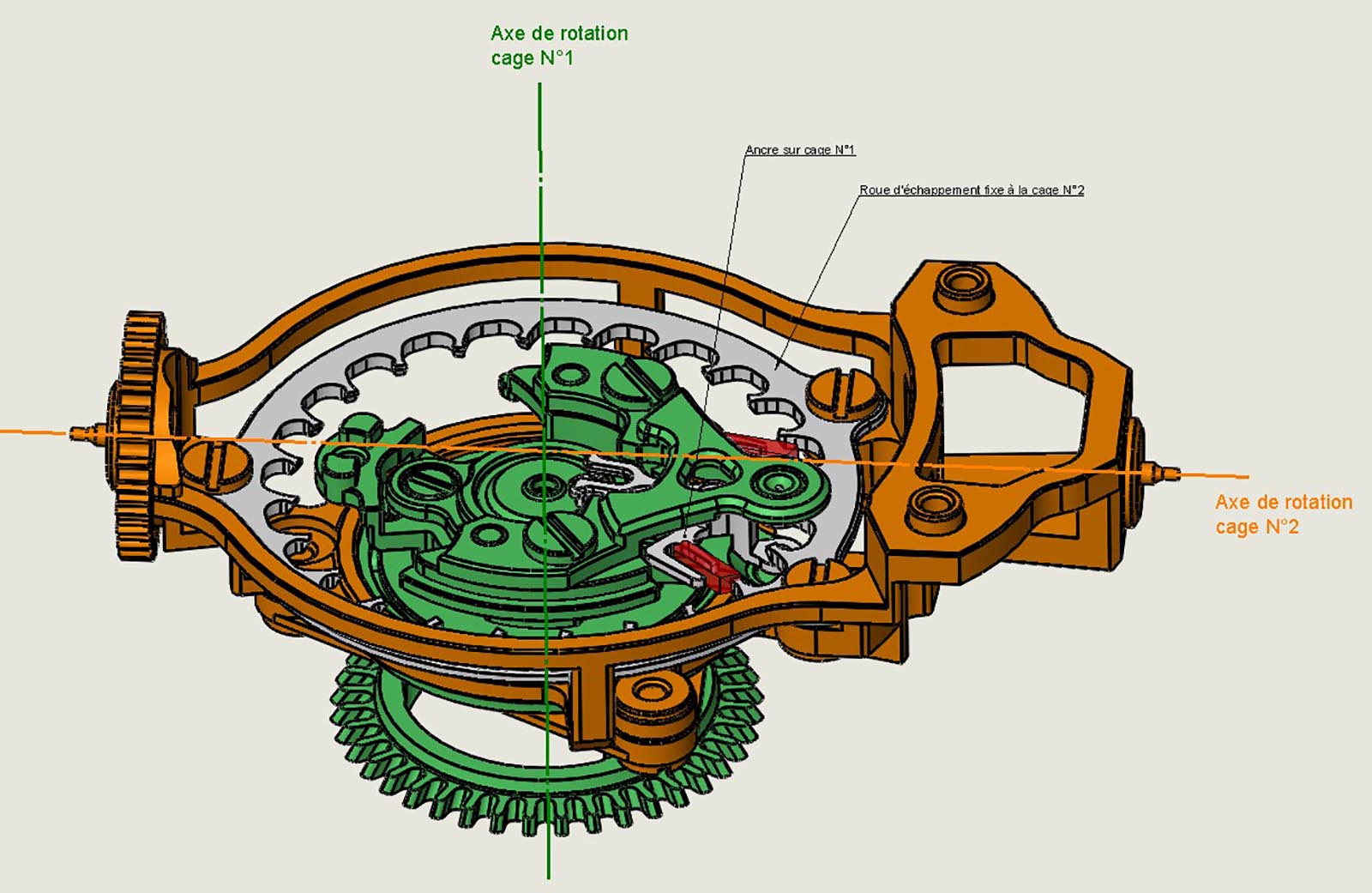
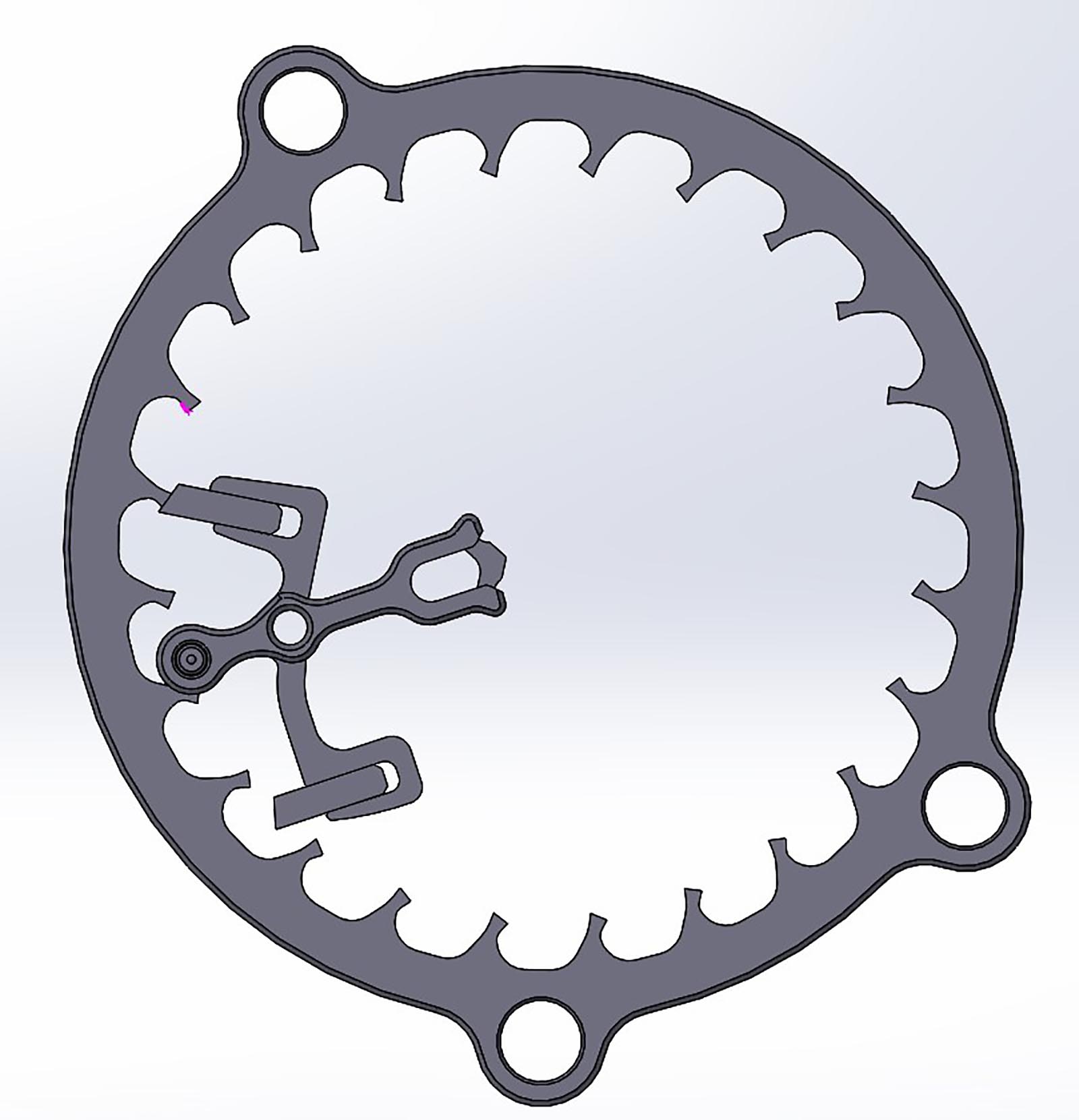
The Potter escapement in the LM Thunderdome. Image – MB&F
It is worth mentioning that this is not the first time such a fixed escape wheel design has been used in a modern watch. One such example can be found in the Franck Muller Thunderbolt, the fastest ever single-axis tourbillon, making one revolution every five seconds.
The Thunderbolt tourbillon was invented by Jean-Pierre Golay, the veteran watchmaker then working for Franck Muller Watchland. Mr Golay applied to patent the construction (patent WO2011006617A1), but the patent was not granted. His construction, however, is a single axis tourbillon, and consequently far simpler than the triple axis construction of the LM Thunderdome.
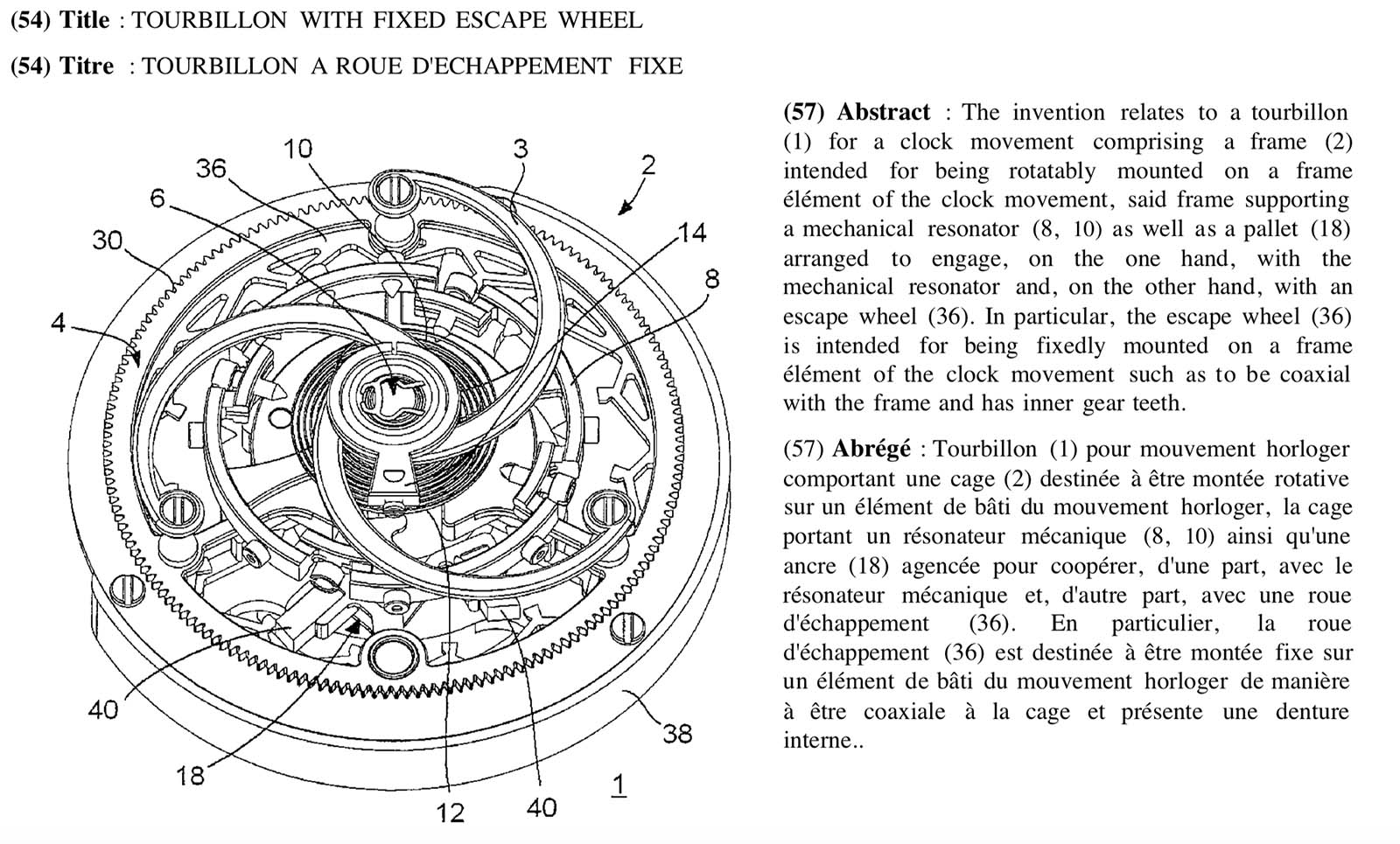
Extract from patent WO2011006617A1 for a tourbillon with fixed escape wheel
Design and finishing
To power such an energy-consuming complication, the movement is equipped with three barrels that unwind in parallel, arranged in a semi-circle. As a result, half the back is dominated by the barrel ratchet wheels, along with a large power reserve display.
The movement is almost symmetrical in its layout, with an open architecture that reveals the large wheels driving the carrousel of the tourbillon.
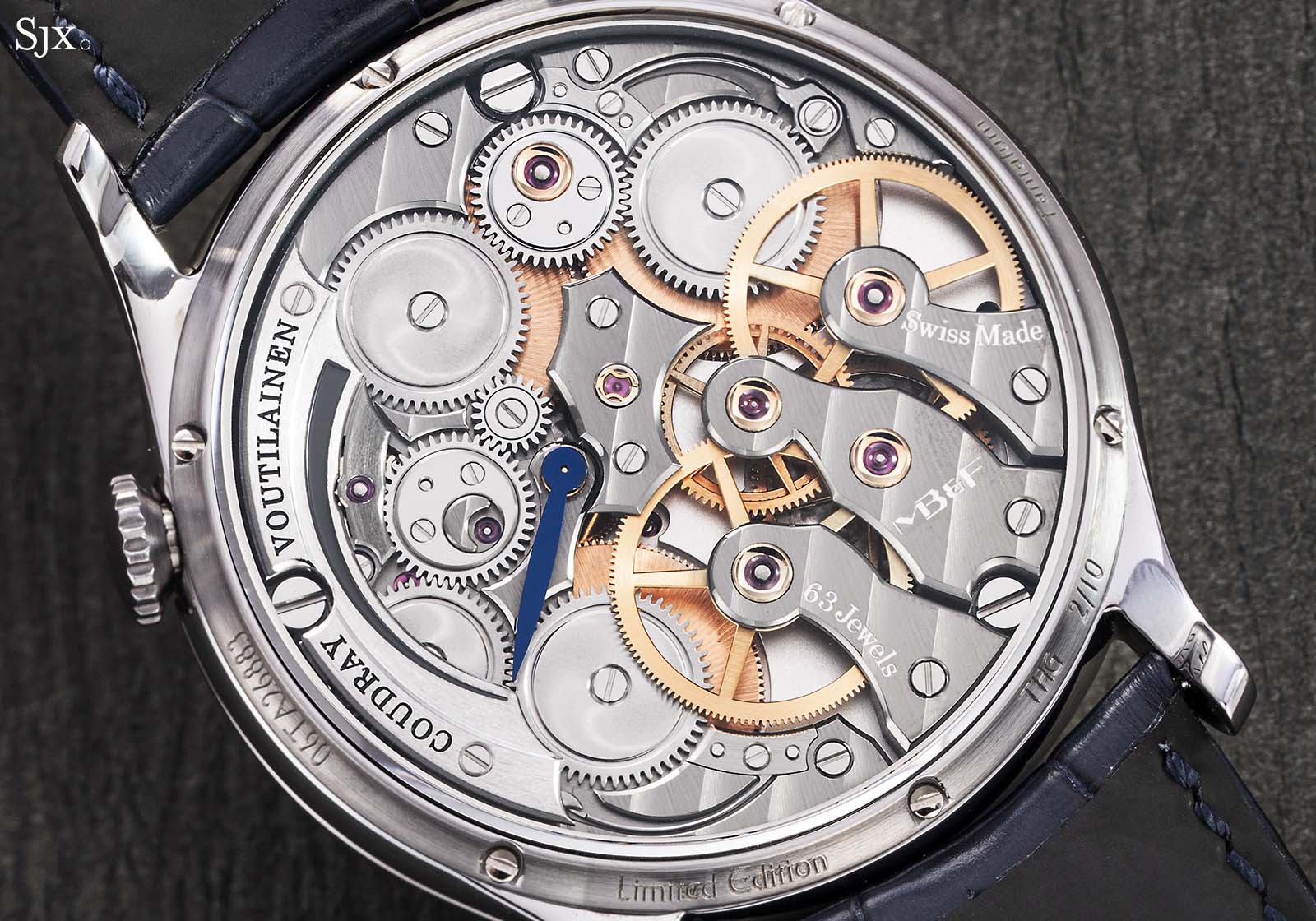
And as with the earlier Legacy Machine movements, the Thunderdome calibre exhibits a high level of finishing and wonderfully classical details, which is the result of Kari Voutilainen’s discerning eye.
The movement is replete with classical details, including wide Geneva stripes, polished bevels, and gold chatons for the jewels of the going train.
Especially noteworthy are the sharply executed polished bevels, or anglage, on the numerous bridges. Even minute details are finished with the same degree of attention, such as the bevelling on the spokes of the wheels, and the straight graining on the winding clicks.
Importantly, this is the first LM movement to feature Voutilainen’s signature spiral finishing, or solarisation, on the barrel ratchet wheels, as opposed to the simpler sun-ray finish found on the earlier calibres.
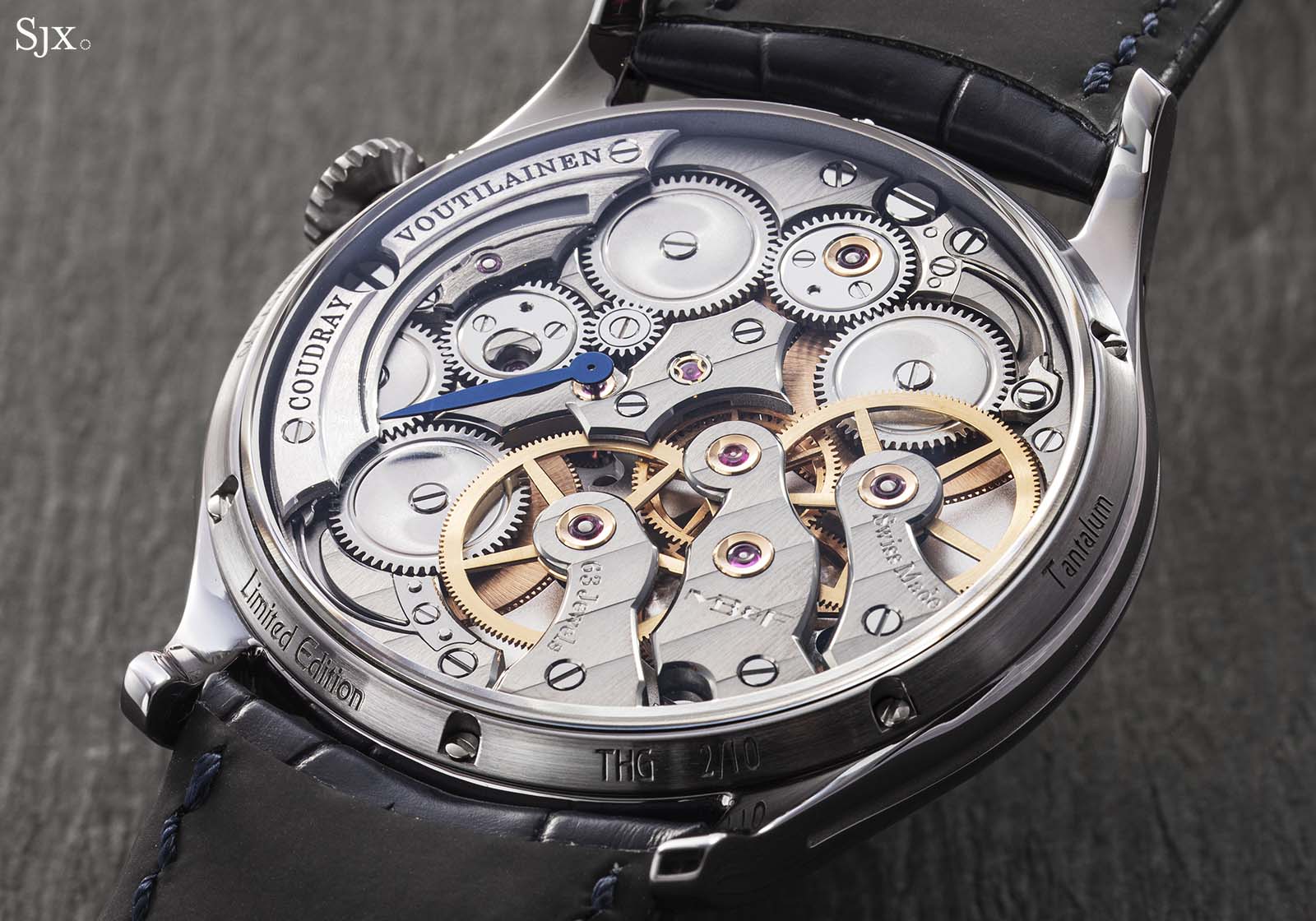
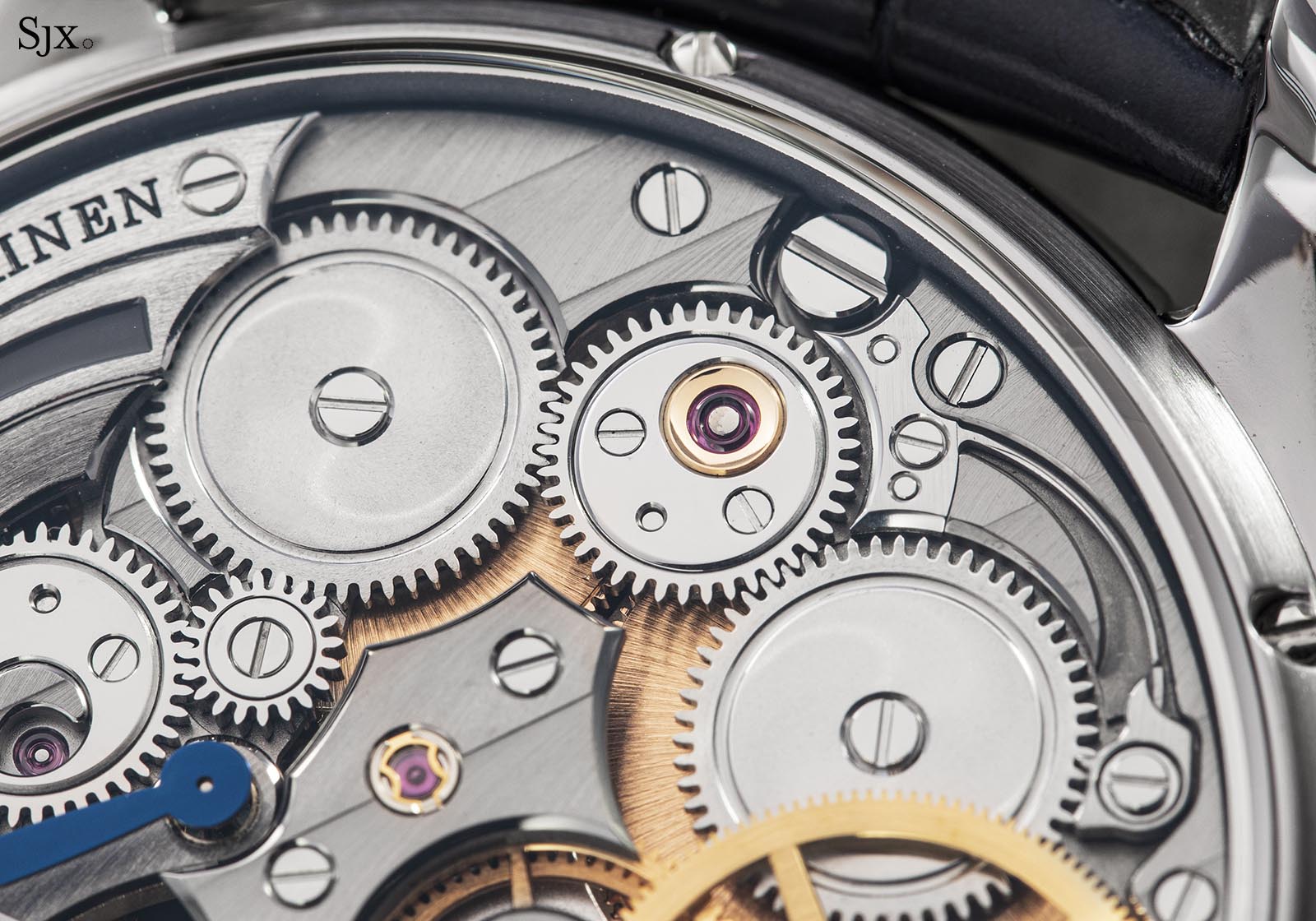
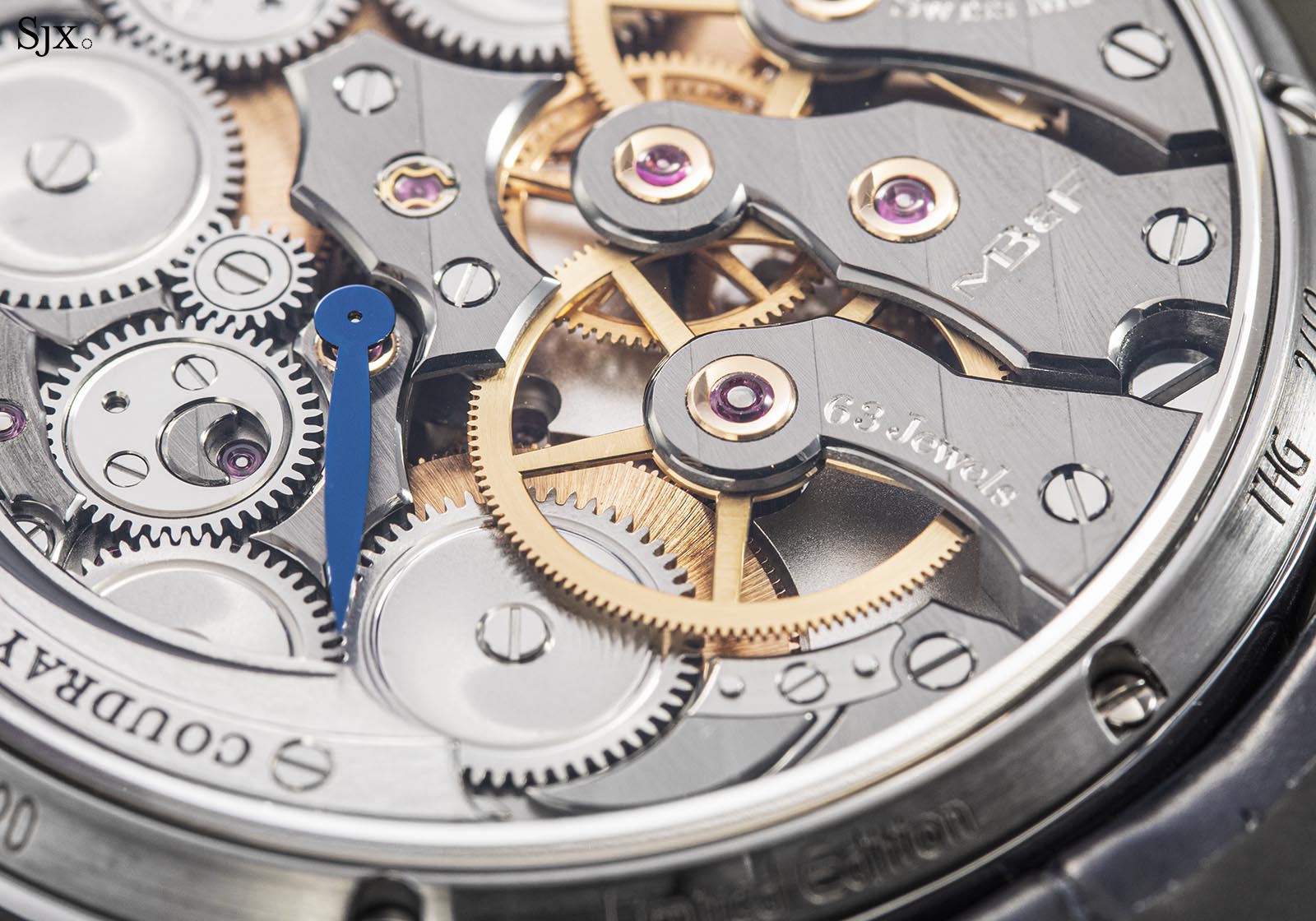
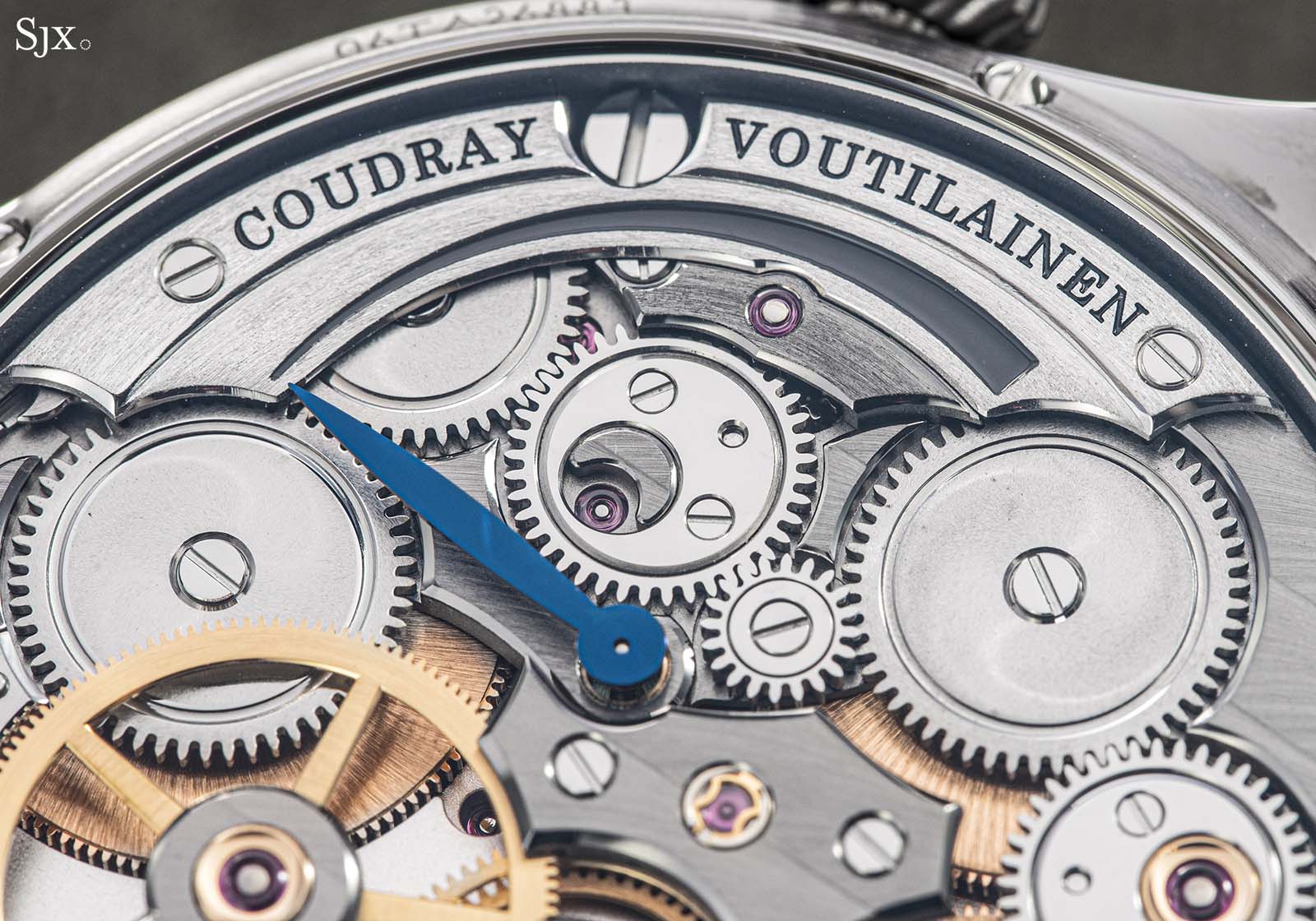
Concluding thoughts
While multi-axis tourbillons in general tend to recall the slightly dated, maximalist approach to watchmaking of the 2000s, the LM Thunderdome is arguably the most technically intriguing and inventive take on the well-used idea. It is a combination of new and old ideas – most notably the unique escapement and carrousel construction – while being executed in a modern, yet remarkably elegant way.
Though it’s difficult to be impressed by a multi-axis tourbillon over a decade after they first became fashionable, the LM Thunderdome is an impressive watch.
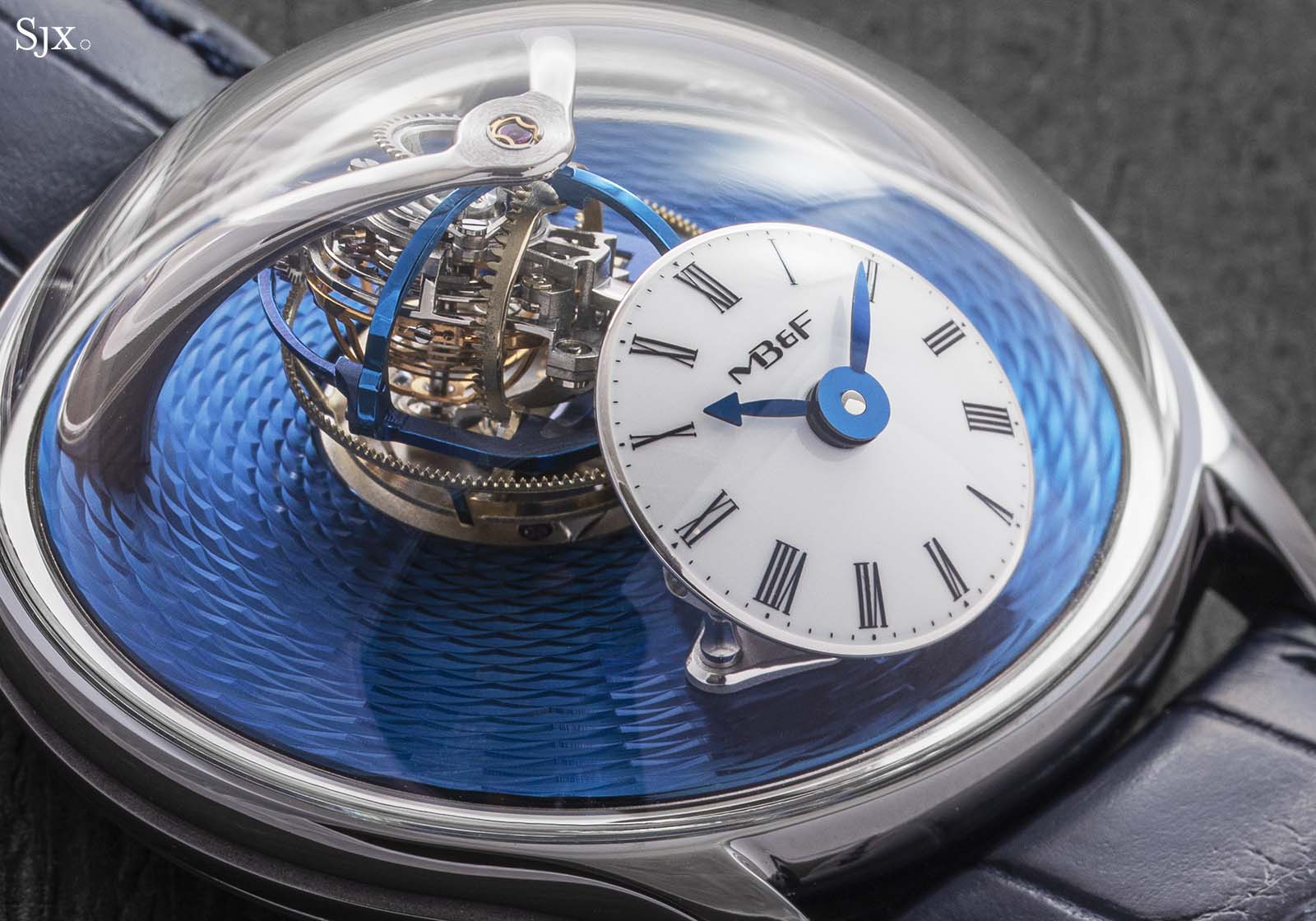
Key facts and price
Legacy Machine Thunderdome
Diameter: 44mm
Height: 22.2mm
Material: Tantalum or platinum
Water resistance: 30m
Movement: Developed for MB&F by Eric Coudray and Kari Voutilainen
Functions: Hours, minutes, and TriAx tourbillon
Winding: Hand-wound
Frequency: 21,600bph, or 3Hz
Power reserve: 45 hours
Strap: Blue hand-stitched alligator strap with folding buckle
Limited edition: 10 in tantalum (five each with aventurine or blue guilloché dial); 33 in platinum
Availability: Tantalum exclusive to The Hour Glass; platinum at retailers and boutiques
Price: 376,000 Singapore dollars for the tantalum edition; US$280,000 in platinum
For more, visit MBandF.com.
Correction May 22, 2021: The patent for the Franck Muller Thunderbolt tourbillon was not granted, unlike what was implied in an earlier version of the article.
Back to top.
